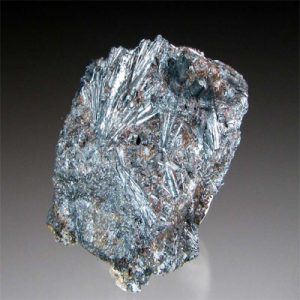Cylindrite
Cylindrite is a very sulfide that is unusual containing lead (Pb), tin (Sn), iron (Fe) and antimony (Sb). It’s one of the most unique crystal habits of the planet that is mineral. As its name implies, Cylindrite’s crystals form as cylinders, or even more acurately, as thin sheets rolled into tubes or cylinders. You will find a couple other minerals whose crystals are created similar to this, but they are microscopic tubes. Cylindrite’s cylindrical crystals can be seen with all the attention that is naked up to 2-3 cm in length. Faceted gems are extremely rare and certainly a treasure for collectors of the very uncommon but mineral specimens are a great deal more appealing and interesting making use of their usually radiating crystals that are cylindrical. Faceted gems are lead gray to grayish black with a luster that is metallic a Moh’s hardness of just 2.5.
Cylindrite is named from the Greek word κύλιυδροσ (kylindros), meaning a roll, in allusion towards the typical type that is cylindrical of crystals.
Cylindrite distribution: Bolivia, with fine examples from Poopó, in the Santa Cruz (Type Locality) and Trinacria mines; during the Porvenir and Maria Francisca mines, Huanuni; from the Nueva Virginia vein, Colquechaca; and from the Purisima vein, all in Oruro; additionally from Llallagua, Potosí. Within the Smirnovsk deposit, Transbaikalia,Russia.
| Category: | Sulfosalt minerals |
| Chemical Formula: | Pb3Sn4FeSb2S14 |
| Lead Tin Iron Antimony Sufide | |
| Molecular Weight: | 1,844.71 gm |
| Composition: | Iron | 3.03 % | Fe | ||
| Tin | 25.74 % | Sn | |||
| Antimony | 13.20 % | Sb | |||
| Lead | 33.70 % | Pb | |||
| Sulfur | 24.34 % | O | |||
| 100.00 % |
| Crystallography: | Triclinic – Pinacoidal |
| Crystal Habit: | In concentric spherical or tubular shells and aggregates, with individual cylindrical crystals up to 5 mm across and 2–3 cm in length, rarely terminated; also massive. |
| Twinning: | None |
| Cleavage: | Perfect on {100} |
| Fracture: | Malleable; deforms rather than breaking apart |
| Tenacity: | Malleable |
| Moh’s Hardness: | 2.5; Vickers: VHN100=54 – 93 kg/mm2 |
| Density: | 5.43 – 5.49 (g/cm3) |
| Luminescence: | None |
| Radioactivity: | Not Radioactive |
| Color: | Lead gray, grayish black. In reflected light, galena-white |
| Transparency: | Opaque |
| Luster: | Metallic |
| Refractive Index: | R1–R2: (400) 34.5–40.3, (420) 34.3–40.1, (440) 34.1–40.1, (460) 33.6–39.8, (480) 33.1–39.4, (500) 32.5–38.9, (520) 31.8–38.3, (540) 31.2–37.8, (560) 30.7–37.2, (580) 30.3–36.7, (600) 29.9–36.3, (620) 29.6–35.9, (640) 29.3–35.5, (660) 28.9–35.1, (680) 28.6–34.7, (700) 28.4–34.4 |
| Birefringence: | 0.000 (opaque) |
| Dispersion: | n/a |
| Pleochroism: | Extremely weak: parallel to elongation gray-white, perpendicular to the elongation, darker gray-white. Stronger in oil. |
| Anisotropism: | Distinct; gray to pale yellowish or brownish gray |


